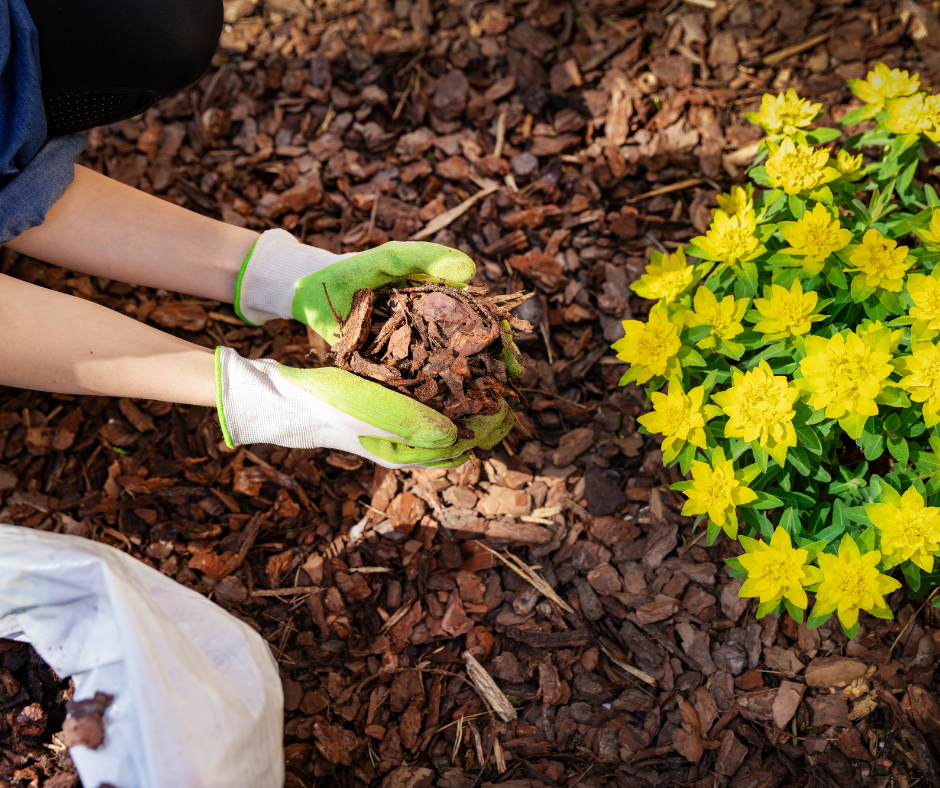 As the scorching Texas summer gradually yields to cooler temperatures, it’s time for gardeners in North Texas to start thinking about preparing their landscapes for the fall and winter seasons. One essential element in this preparation is mulch. Mulching offers a multitude of benefits for your garden, from conserving moisture to insulating plant roots. We’ll explore the ins and outs of mulching in North Texas during the fall and winter, giving you valuable insights and tips to ensure your garden thrives in the upcoming months.
As the scorching Texas summer gradually yields to cooler temperatures, it’s time for gardeners in North Texas to start thinking about preparing their landscapes for the fall and winter seasons. One essential element in this preparation is mulch. Mulching offers a multitude of benefits for your garden, from conserving moisture to insulating plant roots. We’ll explore the ins and outs of mulching in North Texas during the fall and winter, giving you valuable insights and tips to ensure your garden thrives in the upcoming months.
The Importance of Mulching
- Retaining Soil Moisture
North Texas is known for its hot and arid climate. During the fall and winter, maintaining soil moisture can be challenging. Mulch acts as a protective barrier, reducing evaporation and helping the soil retain precious moisture.
- Temperature Regulation
Mulch serves as a natural insulator. It helps regulate soil temperature, preventing extreme fluctuations that can harm plant roots. In North Texas, where temperature variations are common, this is especially crucial for plant health.
- Weed Suppression
Weeds can be relentless, even in the cooler seasons. A thick layer of mulch acts as a formidable weed barrier, keeping unwanted plants at bay without the need for harmful herbicides.
- Soil Enrichment
Over time, mulch breaks down and enriches the soil with organic matter. This enhances soil structure and fertility, providing a healthier environment for your plants.
Choosing the Right Mulch
- Organic vs. Inorganic
Consider your options when it comes to mulch materials. Organic mulches like wood chips and shredded leaves are great for enriching the soil. Inorganic mulches like gravel or rubber can offer a unique aesthetic but don’t provide the same soil benefits.
- Local Availability
Opt for mulch materials readily available in North Texas. Cypress and cedar mulch are popular choices due to their local availability and natural pest-repellent properties.
- Mulch Depth
Apply mulch at the right depth. For North Texas, a layer of 2-4 inches is ideal. This provides adequate insulation without suffocating plant roots.
Mulching Techniques
- Timing
Mulch before the first freeze. Applying mulch too early can trap heat, while mulching too late may not provide sufficient insulation.
- Mulch Rings
Create mulch rings around the base of your trees and shrubs. This prevents damage from freezing and thawing cycles in the soil.
- Avoid Piling Mulch
Mulch should never touch the trunk or stems of your plants. Leave a small gap to prevent rot and pests.
Maintenance
- Regular Inspection
Check your mulch periodically. Remove any moldy or matted mulch to prevent disease and improve air circulation.
- Top Dressing
Add a fresh layer of mulch as needed, typically in the spring. This replenishes its benefits and keeps your garden looking tidy.
In North Texas, mulching during the fall and winter is a garden essential. It helps retain moisture, regulate temperature, and suppress weeds while enriching the soil. By choosing the right mulch materials, applying them correctly, and maintaining your mulch layer, you’ll ensure a healthier and more vibrant garden throughout the cooler months.
Please go to Fallas Landscape for all your fall landscaping needs.

